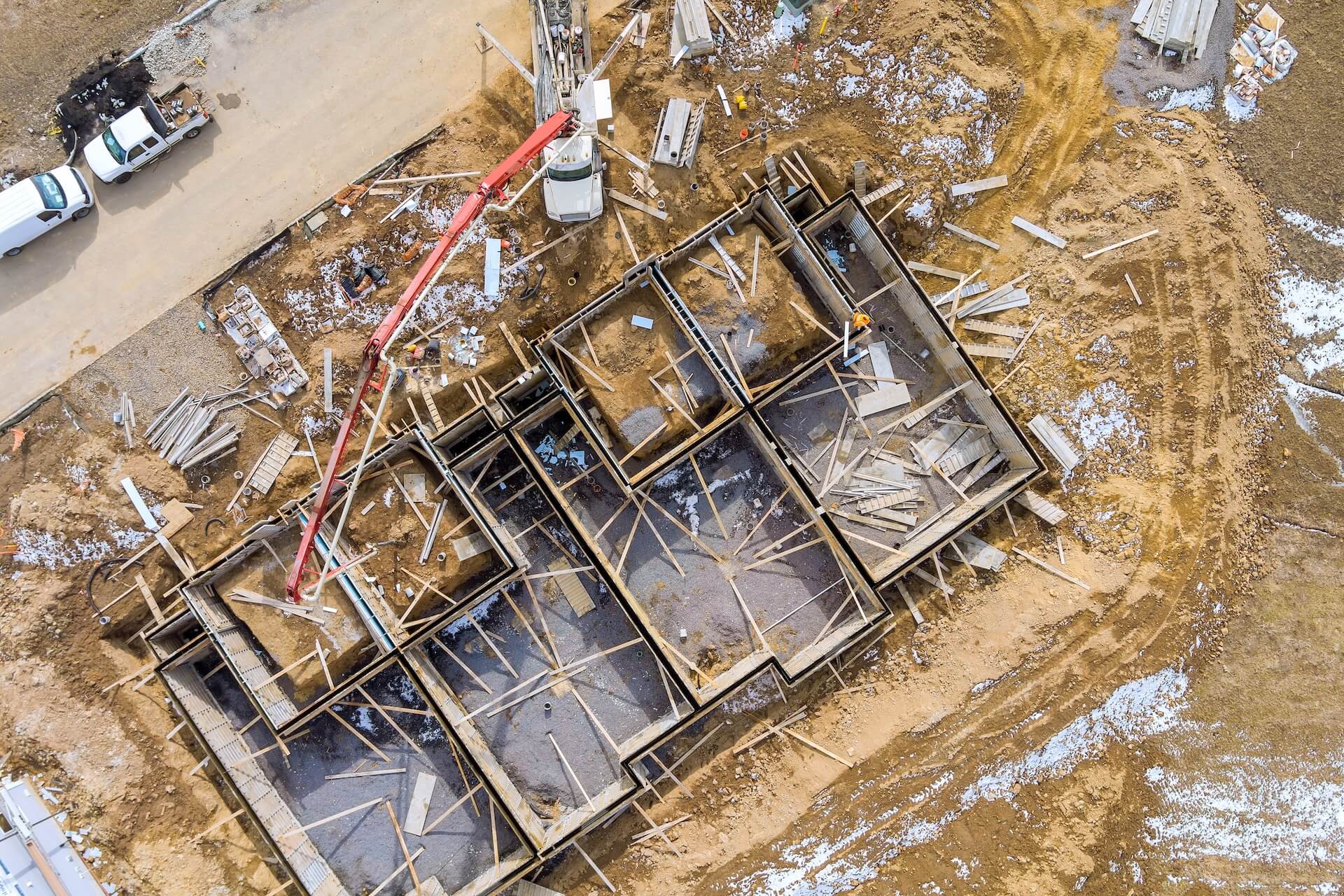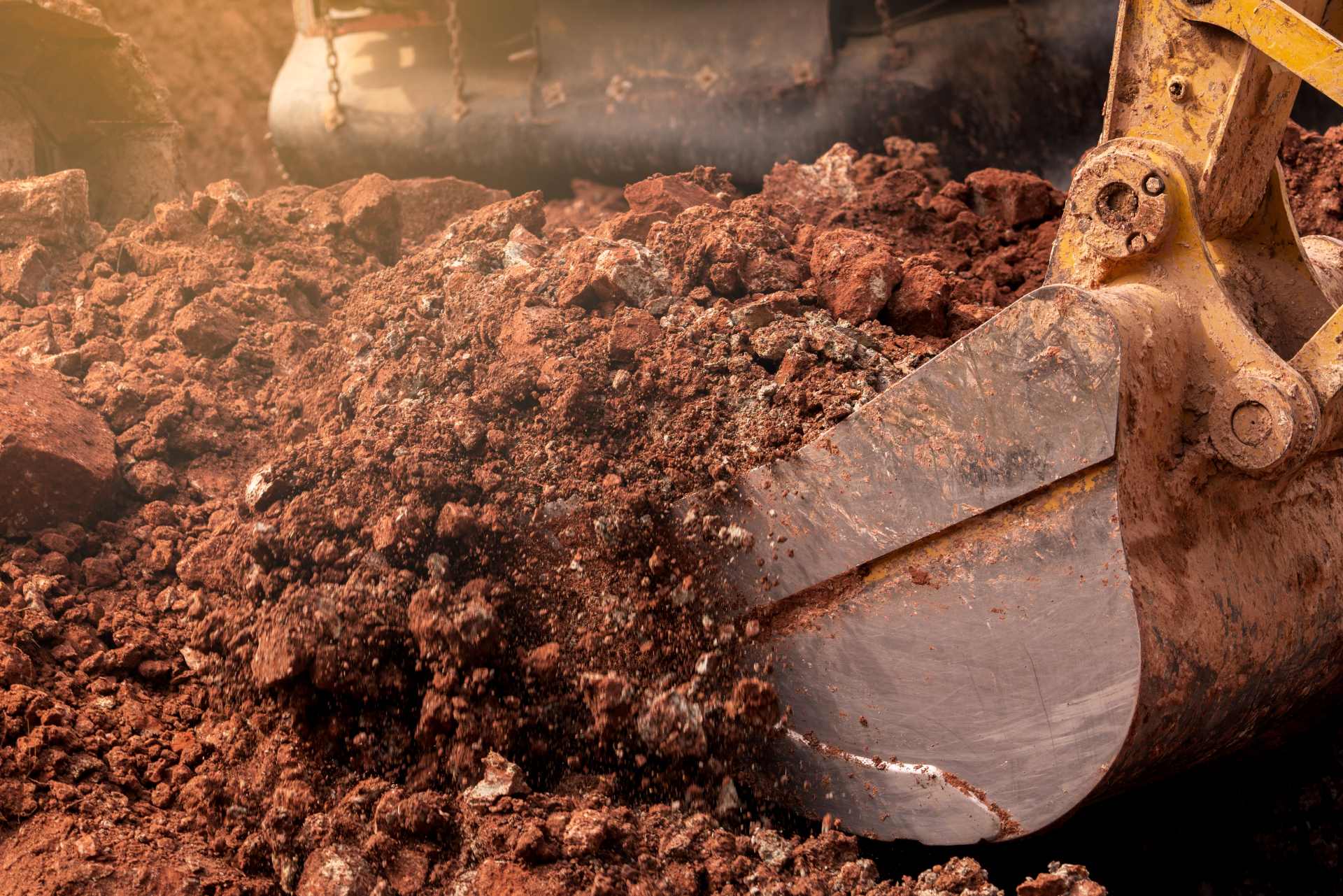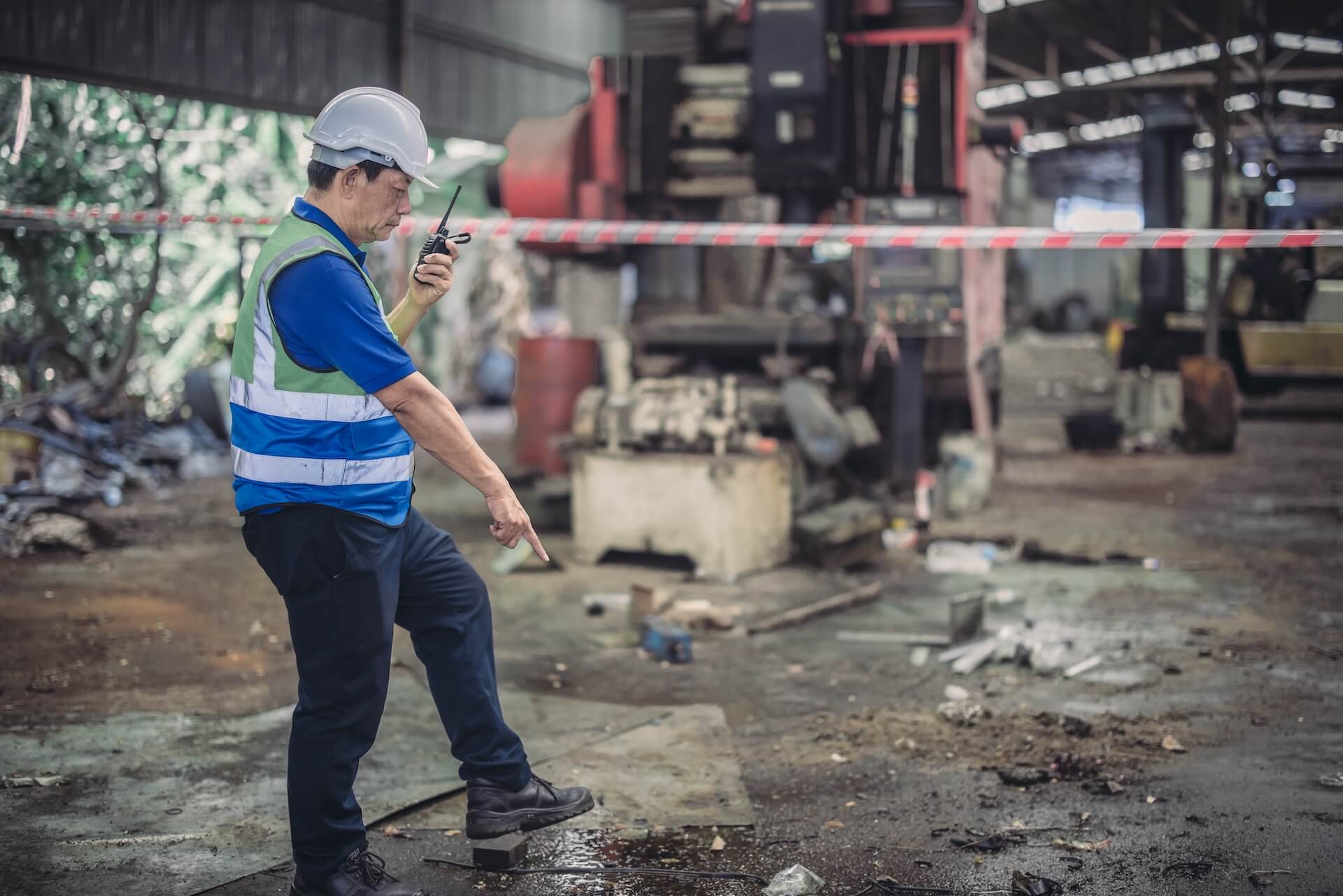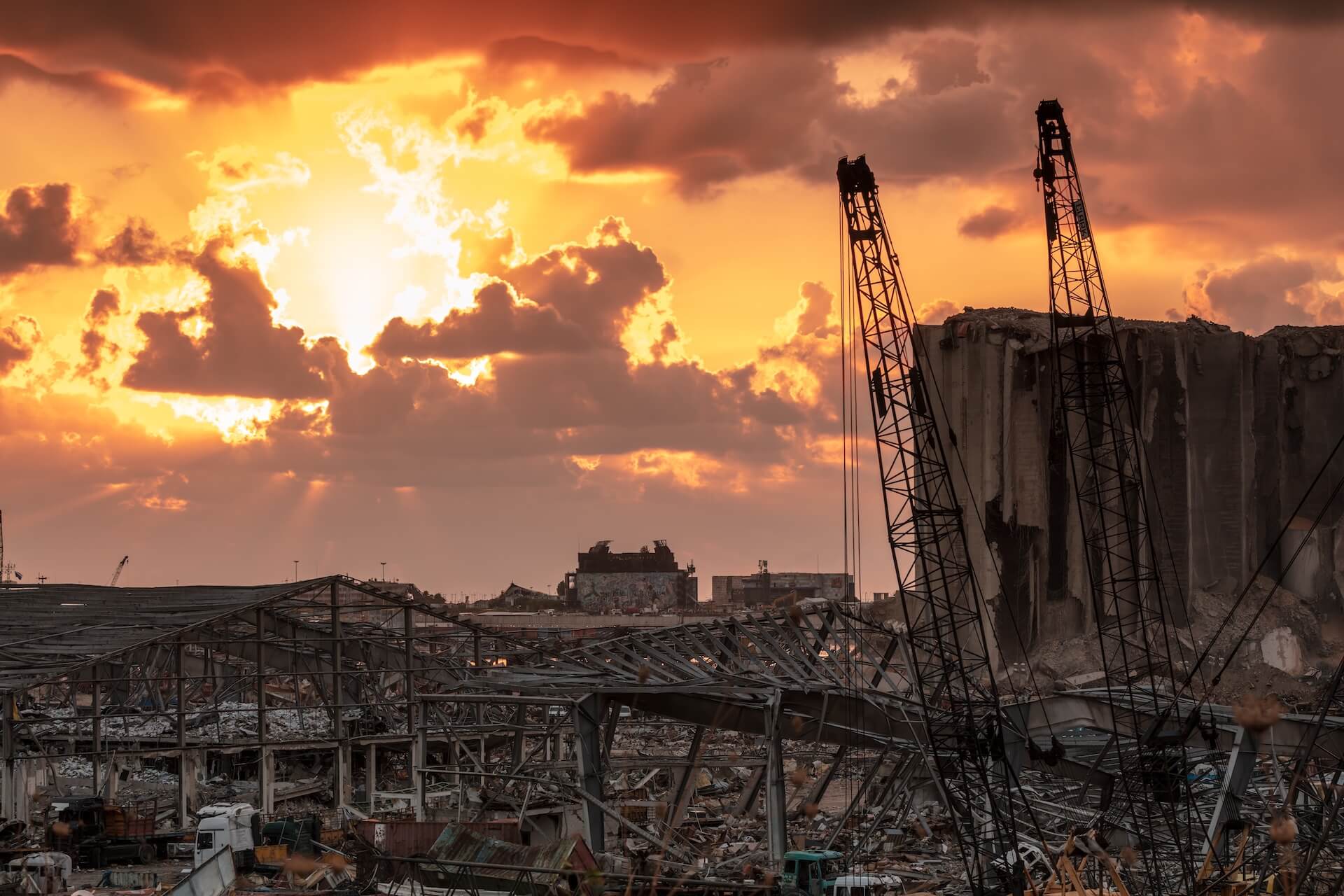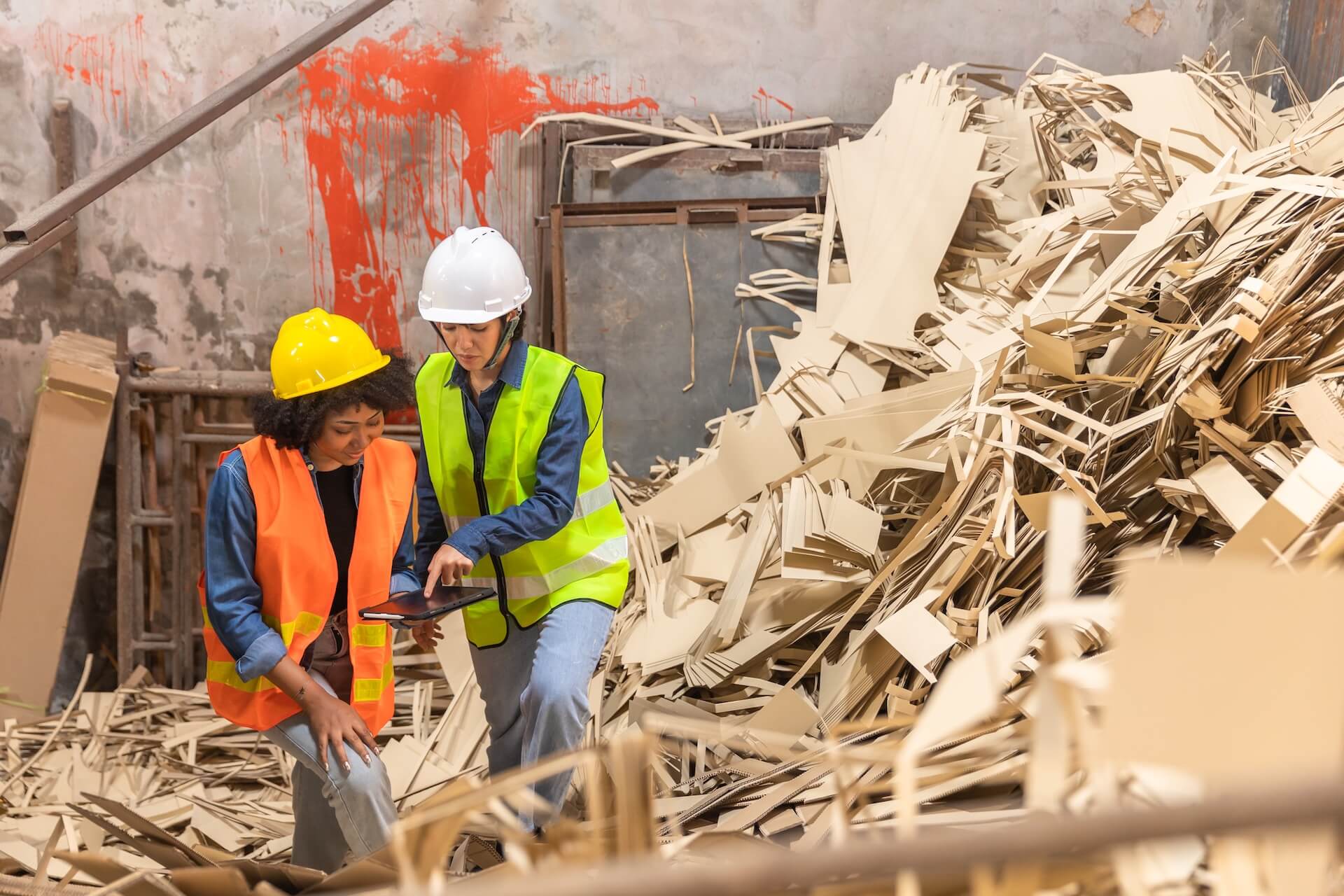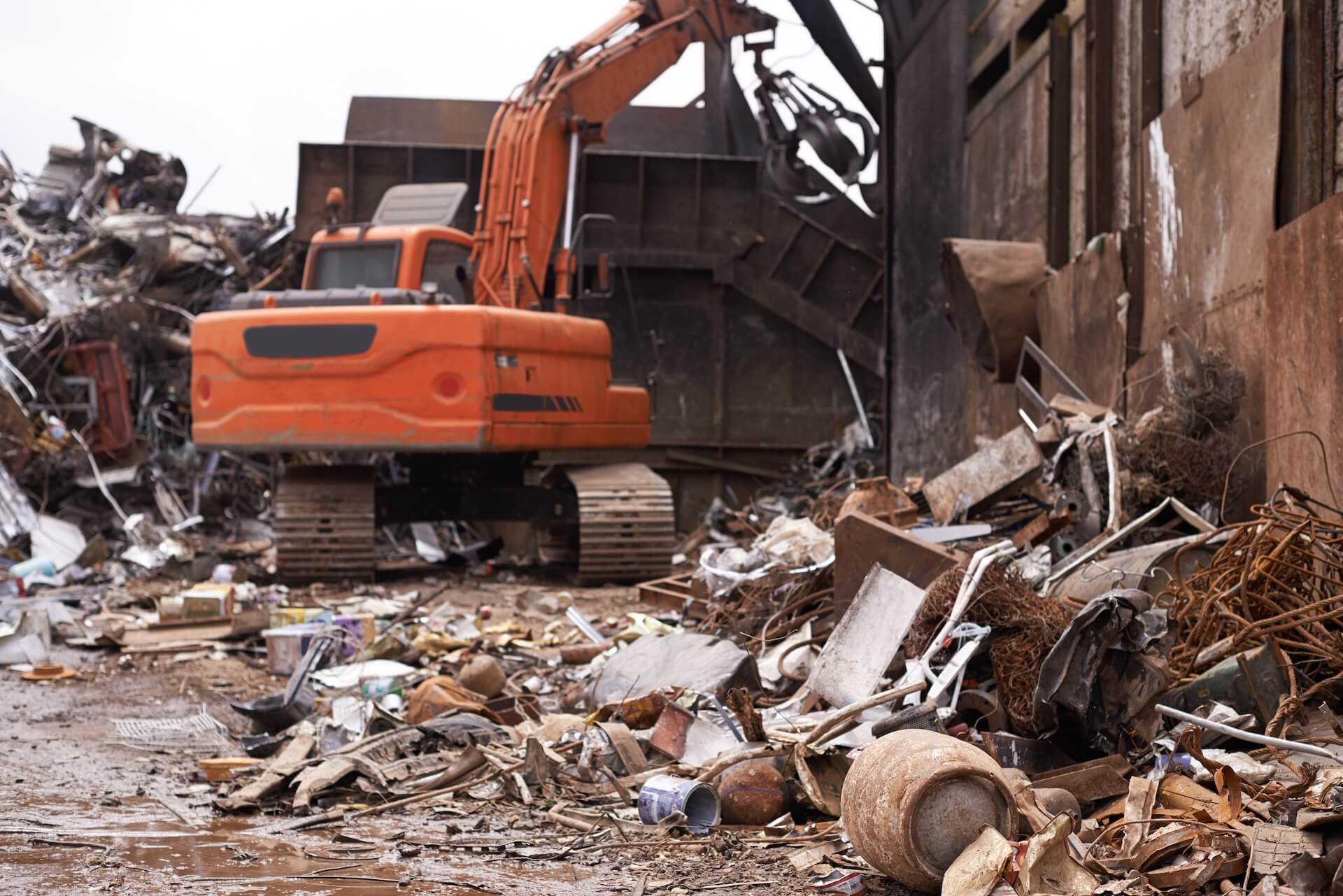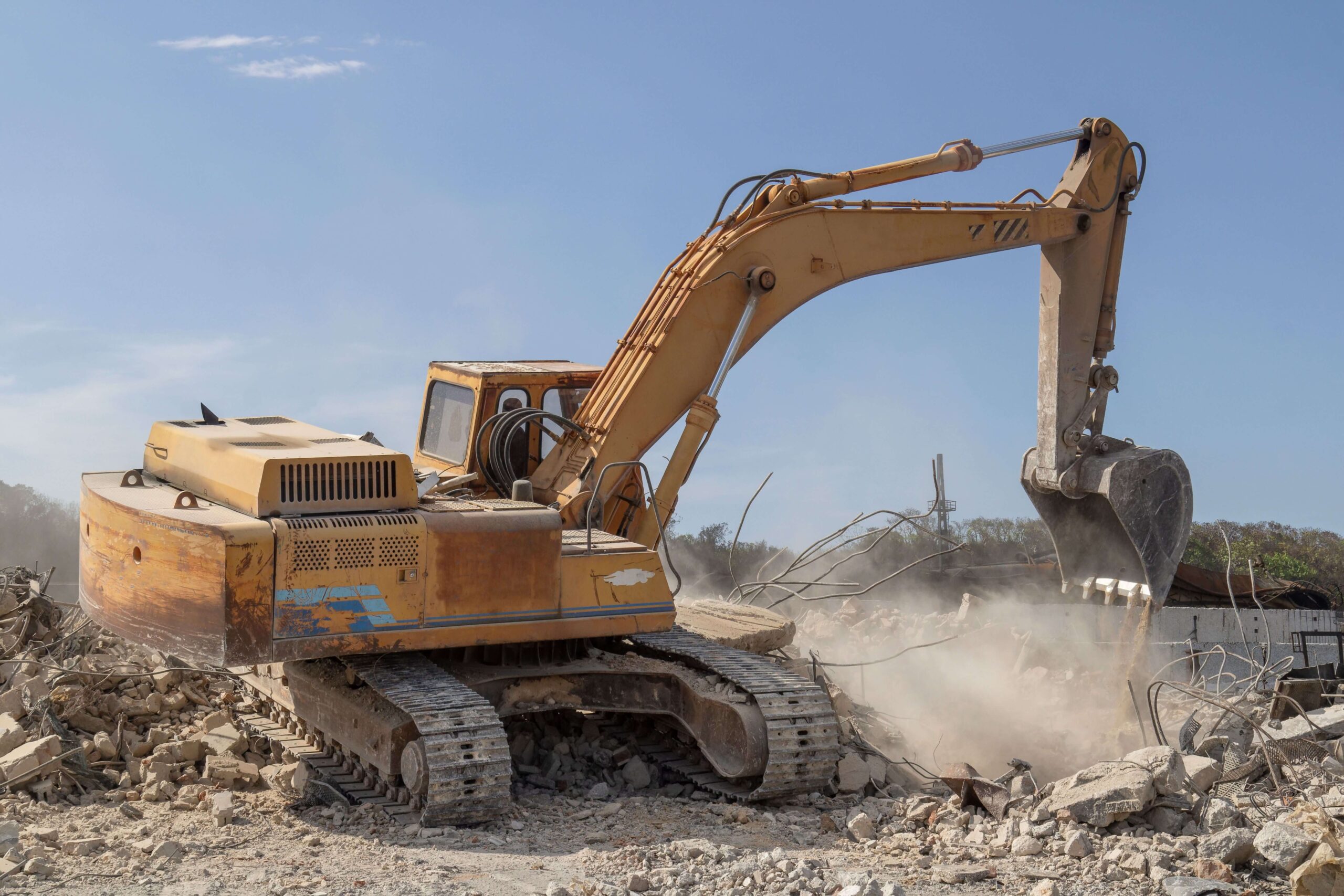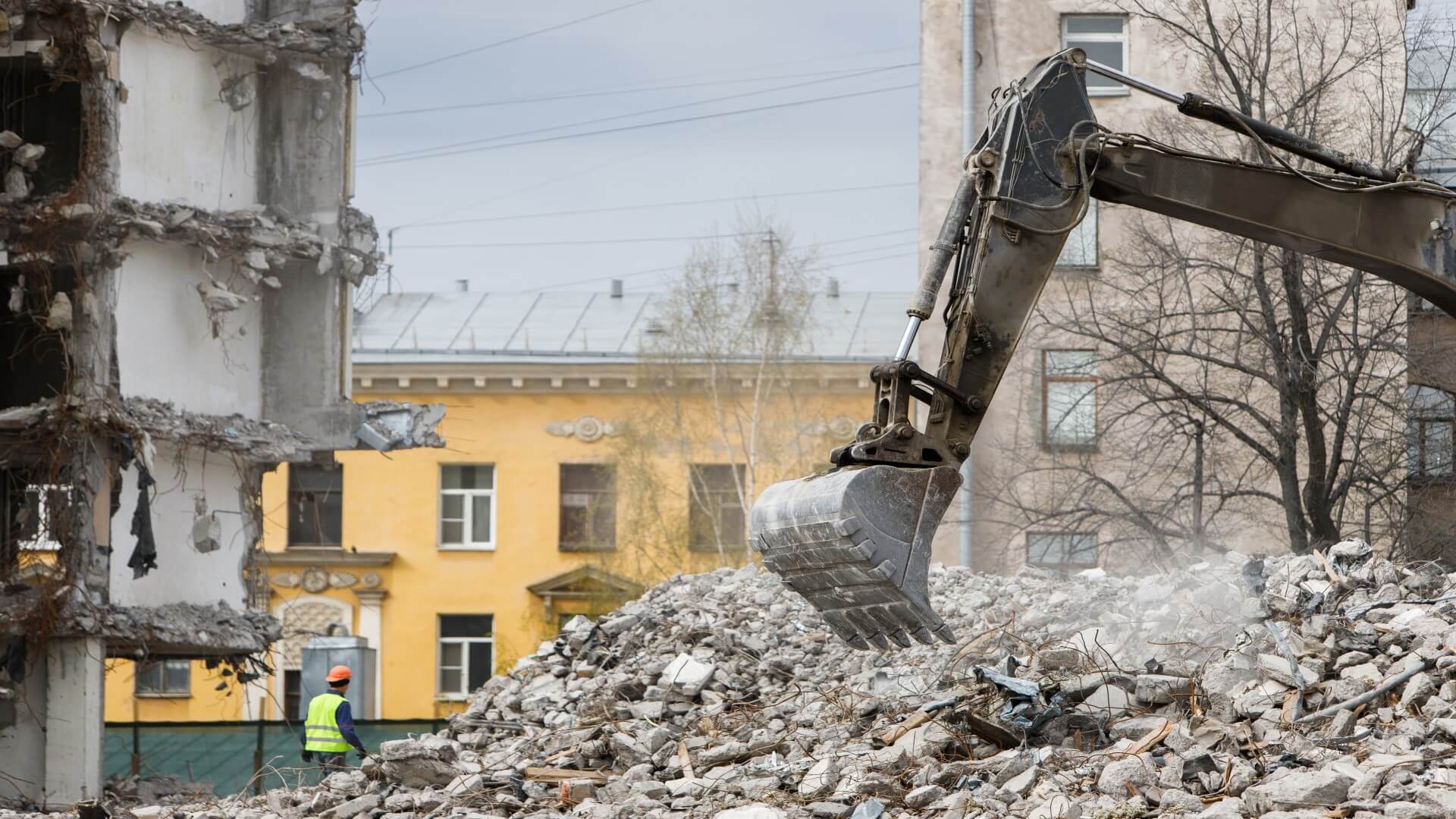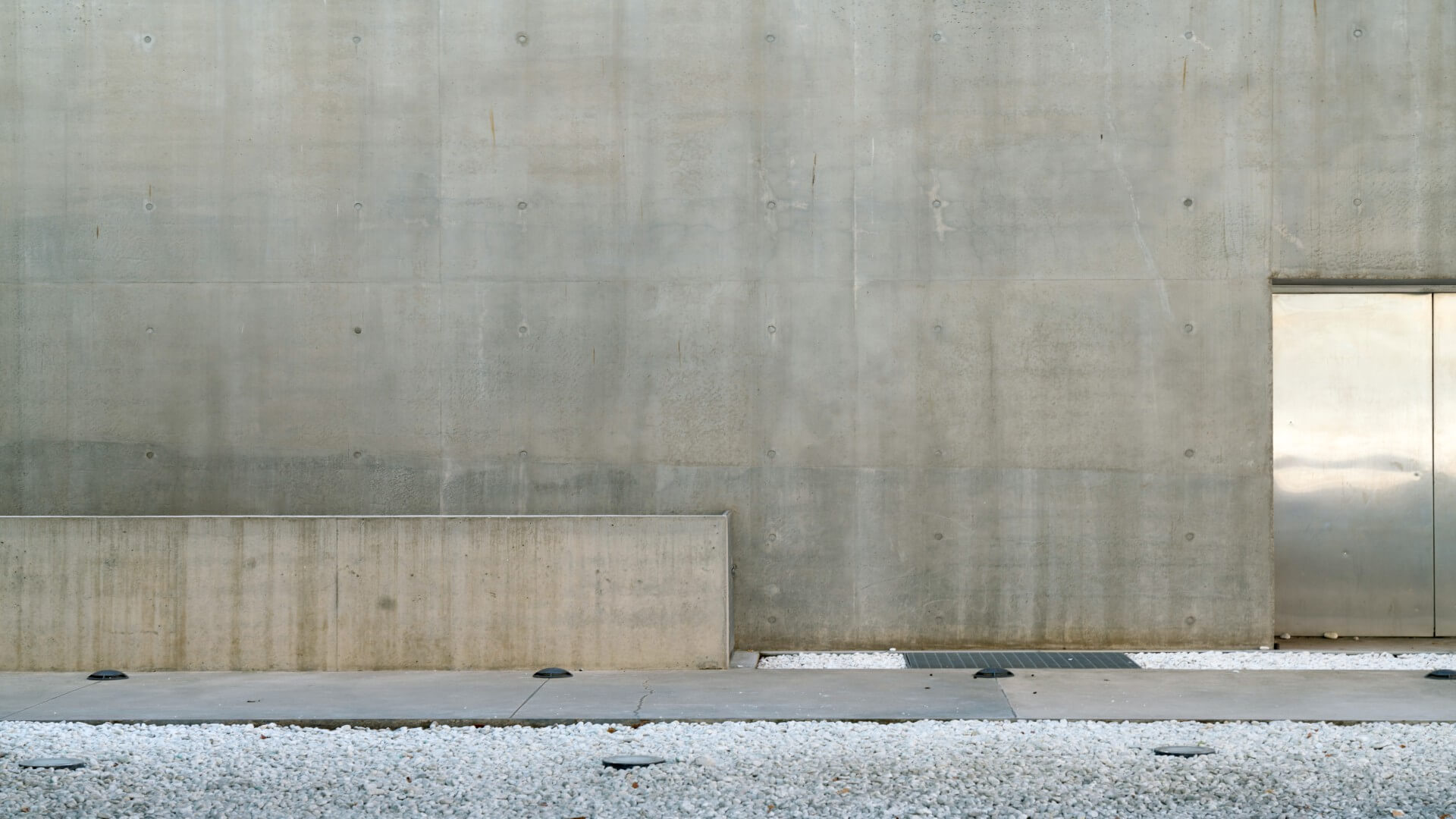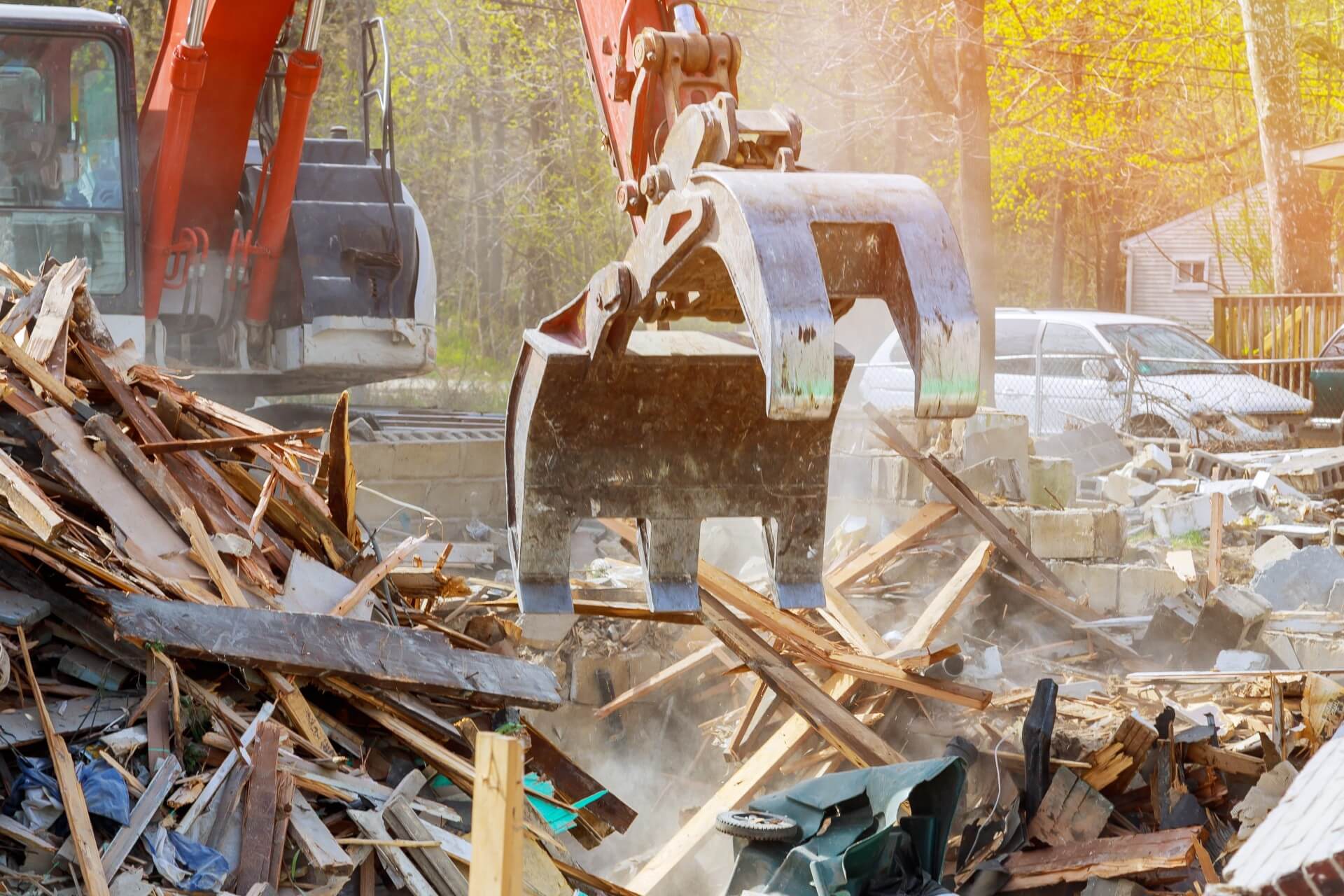-
Common Methods of Demolition in Australia
February 8th, 2025 | by gumdaleDemolition is a key aspect of the construction industry in Australia. It requires expert planning and the right tools to ensure the job is done right and safely. Whether the project calls for an entire building to be knocked down or removing a small area for renovation there is a range of methods of demolition to suit. From mechanical demolition for large buildings, to non-structural strip-outs, there will always be demolition techniques suited to your project.
If you’re searching for Brisbane demolition companies who offer excellent services you’ve come to the right place. Contact our team at Gumdale Demolition on (07) 3809 4108 or get a free quote online.
The Most Common Methods of Demolition
Mechanical Demolition
Mechanical demolition is the most used out of all methods of demolition. It involves the use of heavy machinery such as excavators, bulldozers, cranes, and historically wrecking balls. These machines are used to knock the building down and then clear the resulting debris from the site.
In Australia it is most common for demolition companies to use excavators because of their versatility and long reach. Wrecking balls, although the poster boy of demolition, are very rarely used in demolition due to the effectiveness of long reach excavators.
Manual Demolition
Manual demolition is an option that is often reserved for smaller narrow areas that machinery cannot access. This form of demolition requires hand tools like picks, sledgehammers, and jackhammers, all which take significant manpower to operate.
Out of all the demolition techniques this is among the most labour and time intensive methods and requires more protective measures than others. Often this demolition process is used in residential demolition.
Implosion
Implosion demolition is the controlled method of collapsing a structure by detonating explosives that cause it to fall in on itself. Implosion demolition is a popular choice because of the time and money it can save and the reduced risk to workers. However, while the demolition is fast it can require weeks, months, or even a year of planning and pre-work to get it right.
This method is often used in industrial demolition and is a popular method for demolishing bridges, smokestacks, towers, and tunnels. It also makes for a great spectacle, with many videos of implosion demolition going viral, both for going right, and going wrong.
Partial Demolition
Partial demolition, as the name suggests, only affects parts of the structure or building. This can be in the form of knocking down a wall, removing a full room, or even an entire level. Partial demolition is a great choice as it still allows you to use the functionality of your other spaces.
Partial demolition is most common in house renovations when people are looking for more open plan living or knocking down an old part of the house like a bathroom or kitchen. It has its uses in industrial and commercial spaces as well. Demolition and upgrades are required when a building may not be up to code or is being upgraded.
Interior Strip-Out
An interior strip-out is one of the few demolition techniques that doesn’t touch the structural components of the building. This demolition method is focused on the non-structural and fixtures such as floor coverings, partition walls, kitchens, toilets, ceilings, air conditioner vents and more.
Strip-outs are most commonly used in commercial demolition and performed before a renovation or when new tenants are moving in. Care needs to be taken with a strip-out as to not damage any structural components of the building.
Work With the Demolition Experts
At Gumdale Demolition, we are fully licensed and qualified to handle a range of demolition projects on commercial, residential, and industrial properties. These demolition projects can require a wide range of techniques to be deployed, which our team can handle with no fuss. If you’re ready to get started, or you wish to learn more about our services, give us a call on (07) 3809 4108 or get a free quote online.
-
What is Soil Remediation?
December 4th, 2024 | by gumdaleSoil remediation is the process of cleaning up soil that is contaminated with pollutants or hazardous substances. It is used to restore the land to its original and natural state and can be an effective way of protecting the environment. Soil remediation includes techniques such as excavation and removal of contaminated soil, soil washing, bioremediation, and thermal or chemical treatment, but what is contaminated soil, what do each of these techniques involve, and why is it important?
If you’re searching for a demolition contractor that specialises in soil removal, you’ve come to the right place. Contact our team at Gumdale Demolition on (07) 3809 4108 or get a free quote online.
What is Contaminated Soil?
By definition, any substance in soil that exceeds naturally occurring levels and poses a threat to humans and the environment is considered a soil containment. The places most at risk of contaminated soil are urban areas and former industrial sites. Contaminated soil is most often caused by pesticides, asbestos, lead, petroleum products, and radon. If you are unsure if the soil on your site is contaminated or not, get it tested by a professional.
Types of Soil Remediation
Excavation and Removal
A common method of contaminated soil removal is physical removal. This involves excavating the contaminated soil and transporting it to a disposal site where it can be handled safely. This method is often used in large scale projects and may be necessary where there are high levels of toxic material present that can’t be treated by other means.
Soil Washing
Soil washing is as it sounds, and hazardous contaminants are removed by washing the soil with a liquid wash solution. This process involves fine soils, such as clay and silt, being washed away with contaminants, as they are much more prone to bind with fine soils. This process leaves coarse soils, like gravel and sand, that can be reused. Contaminants removed this way are not destroyed and must be disposed of professionally.
Bioremediation
Bioremediation uses living organisms to actively remove and immobilise soil pollutants. This technique uses micro-organisms or plants to break down or fixate soil contamination. Certain bacteria can be used to reduce compounds, and some plant species can accumulate contaminants, drawing them out of the soil.
Chemical Treatment
Chemical soil treatment generally focuses on chemical oxidation, where chemical oxidants are injected into the soil and groundwater to destroy the contaminants present. This is a versatile solution for contaminated soil removal that is useful when working with contaminated soils that are deep underground or underneath structures.
Thermal Remediation
There are several treatment technologies that rely on heat for contaminated soil removal. Thermal treatments use heat to destroy the contaminants which are released in the form of gas and is further treated using other methods.
Why is Soil Remediation Important
Soil remediation is a vital practice as the containments found can be harmful for plants, animals, and humans. In addition to this, the pollution also makes the land unusable, but remediation changes that.
Environmental Health
The first thing affected by contaminated soils is the plants that rely on it for nutrients to survive. The roots take up contaminants and can be fatal for plant life. Contaminated soil also affects animal life, as touching the soil, or eating the contaminated plants can cause health issues. Entire ecosystems can be impacted by contaminated soil.
Public Health
Just like contaminated plants pass on toxins to animals, humans can suffer serious harm by eating contaminated plants and animals. Touching the soil itself also carries risk. People who work on or live near contaminated soil are likely to face some serious health concerns.
Land Availability
Due to industrial practices or overuse of fertilisers and pesticides, land becomes unusable when the soil is contaminated. Remediation restores this land, making it safe for plants, animals, and humans to use. Whether the land is being restored to its natural states, used for further industrial purposes, or being farmed, remediation is very important.
Environmentally Friendly Soil Removal and Demolition
At Gumdale Demolition, we are fully licensed and qualified to handle a range of demolition projects on commercial, residential, and industrial properties. These demolition projects typically result in a lot of excess materials being on-site, which is why we also offer soil removal services to take this waste off your hands.
We ensure this soil is safely disposed of and ready for reuse. If you’re ready to get started, or you wish to learn more about our services, give us a call on (07) 3809 4108 or get a free quote online.
-
Demolition & Site Clearing – Everything You Need to Know
November 22nd, 2024 | by gumdaleIf you are looking to undergo construction on a block of land that already hosts buildings or structures, it is important that you implement the proper procedures to render the property fit for use. This is where site clearing comes in, as it is used to clean out the entire site and remove any hazards or hindrances that may get in the way of the construction process. It is a key step of any demolition project, and something you should be knowledgeable in before you plan to build on an existing site.
If you’re searching for top-rated home demolition companies in Queensland, look no further than Gumdale Demolition. Get a free quote online or call us on (07) 3809 4108 to get started.
What is Site Clearing?
Site clearing refers to the process of clearing out a site for the purpose of a future construction project. By removing any potential hazards or unnecessary materials before contractors arrive, construction can proceed safely and efficiently. Depending on the previous use of the site, heavy machinery may be required, meaning only those who are licensed and qualified to handle this equipment should be permitted on the site.
Another key consideration for the clearing of the site is where the collected waste, rubbish, and debris will be moved to. By using a licensed contractor, they will be able to safely transport these materials to a suitable location for recycling. While demolition knocks down any structures that are on a property, clearing the site afterwards is vital if the purpose of the demolition was to create space for new structures to be built.
Why Use Site Clearing?
If you are planning to build on a block of land, but it is currently occupied by existing buildings or structures, it is important that you invest in the proper clearing services. Along with destroyed buildings, clearing contractors also remove trees, vegetation, soil, and anything else that is blocking the site. They also dig up and relocate large in-built items like pools and spas. They make sure any openings in the earth are adequately filled in to ensure maximum safety.
When buildings have been destroyed, there may also be leftover wires and cables that need to be removed. Whether it is phone cables, power lines, or water pipes, these services must safely be disposed of to keep everyone safe. A professional contractor takes the necessary steps to ensure these elements are removed safely, calling the providers ahead of time to cancel these services before work takes place.
Book in a Site Clearing Today!
At Gumdale Demolition, we are one of the most trusted demolition companies in Queensland. We offer comprehensive demolition services and work with residential, commercial, and industrial clients. Whether you are looking to clear a site or demolish a property, get a free quote online or contact us on (07) 3809 4108 to arrange a consultation.
-
Sustainable Demolition – What Is It and Why Is It Important
November 15th, 2024 | by gumdaleWhile demolition is a destructive action in practice, it does not have to cause a negative impact on the environment. Sustainable demolition practices exist to help clients and contractors achieve their goals while minimising their impact on the environment. These sustainable actions take some planning beforehand, but the benefits they provide cannot be understated. Best of all, green demolition is not just more sustainable but is often cost-effective as well.
Eco friendly demolition focuses more on just bringing a structure down, as it considers the lifecycle of the building, and the materials used. Often these materials have already been recycled in some form and can be used again to create more structures in the future. This eliminates wastage, as nothing is thrown away and is instead repurposed to aid the construction of more materials and structures.
If you’re in need of Brisbane residential demolition that focuses on environmentally friendly methods, call us on (07) 3809 4108 or get a free quote online to get started.
The Three Stages of Sustainable Demolition
Reduce Waste
When conducting a demolition project, it can be easy to simply destroy the structure with maximum force and clean up the debris it creates. This results in massive amounts of waste, with the destroyed materials headed straight for the trash pile. Eco friendly demolition puts a focus on sustainability right from the start of the project, putting practices into place designed to reduce waste and keep useful materials in the best quality possible.
Salvage Materials
Once the sustainable demolition project has concluded, it’s time to salvage any useful materials among the debris. Bricks, timber, and even fixtures like doors and windows can be repurposed for future construction projects. This not only saves money, but also benefits the environment by reducing the need for brand-new materials to be created. This process certainly adds more time to the project, but the results are worth it to help build a better tomorrow.
Recycle Scrap
Once all the usable waste from the site has been collected, it can be recycled into new materials. This focus on eco friendly demolition allows new structures to be built using the materials from a past property, creating a cycle of sustainability. Beyond buildings, crushed concrete can be used in the construction of roads, while steel and other metals can be melted down and put to good use.
Why is Sustainable Demolition Important?
When a demolition project is conducted without sustainability in mind, it often results in a massive amount of waste. In fact, traditional demolition activities account for around 40% of Australia’s total waste. This level of waste has a significant impact on the environment, resulting in high levels of air and water pollution. Along with this, the need to extract and process our natural resources for new materials results in environmental imbalances.
Eco friendly demolition seeks to eliminate these issues, or at least minimise their impact. As more and more people account for sustainability when conducting demolition, they are helping to reduce the exploitation of natural resources and decrease the amount of waste in landfills. These benefits also stretch to the economy, as recycling old materials for continued use is far cheaper than needing to harvest and process new ones.
Invest in Sustainable Demolition Today!
If you are searching for demolition businesses that put a strong focus on sustainability, look no further than Gumdale Demolition. We work with residential, commercial, and industrial clients, offering everything from building demolition to asbestos removal. Get a free quote online to learn more or contact us on (07) 3809 4108 to arrange a consultation.
-
How to Wreck Stuff: The Science and History Behind Demolition Engineering
October 31st, 2024 | by gumdaleFor as long as humanity has been building structures, we have also been finding new ways to knock them down. While demolition engineering has evolved significantly over the years, the general concept has always remained the same: find the most efficient way to bring the structure down. Regardless, history has shown us that the methods for how to wreck buildings have vastly evolved over time, shaping the industry through new techniques and technologies.
Don’t know how to wreck properties safely on your own, or lack the required machinery? Contact our professional team on (07) 3809 4108 or get a free quote online to get started.
The History of Demolition Engineering
The art of demolition stretches back thousands of years to the dawn of civilisation, as our ancestors frequently built then destroyed structures to accommodate their evolving needs. Beginning with irrigation systems and defensive fortifications, these basic structures would soon give way to more sophisticated buildings. This is apparent in Ancient Egypt, where pharaohs would regularly order the demolition of older temples to make way for more extravagant ones.
The ancient Greeks and Romans made significant strides in demolition engineering as they developed new tools to destroy more sophisticated structures and buildings. Demolition was also used to clear land for new military installations and urban developments, such as roads and aqueducts. Progress carried on like this throughout the ages until major advancements were made during the Industrial Revolution, where steam-powered machinery came into play.
Perhaps the biggest development in demolition practices is in safety. While in the past demolitions were conducted using crude tools that often resulted in lost lives and avoidable damages, modern machinery is far safer and more precise. Today’s equipment is also often designed with eco-friendliness in mind, resulting in far less impact on the environment and surrounding eco-systems.
The Science of How to Wreck Structures
As society has grown over the centuries, the rise of residential and commercial properties has resulted in the need for demolition as a service. With countless new homes and storefronts popping up every day, it is vital that professional demolition services are readily available to clear land and provide space for new developments. They are also important for destroying and rebuilding structures in new and upgraded ways.
Demolition engineering continues to evolve even today, with machinery and demolition techniques growing to be even safer and more refined. Whether it is wrecking balls or excavators, this heavy machinery is now operated by trained professionals who take every step to make each demolition project as efficient and safe as possible. Regulations and procedures are also now put in place on every worksite to protect workers and civilians located nearby.
Care is also being taken these days to preserve building materials and recycle them for future projects or other uses. This is in comparison to the past when most structures were completely destroyed and the materials either thrown in the trash or left on the ground, harming the environment in the process. Modern demolitionists are also aware of the dangers of materials such as lead and asbestos, often taking projects to remove these harmful substances.
Plan Your Next Demolition Project with Gumdale Today!
At Gumdale Demolition, we are the demolition company you can rely on to complete your projects safely and to the highest possible standard. Whether you need to knock down a residential, commercial, or industrial structure, our fully qualified team possess the skills and the equipment to deliver outstanding results. Get a free quote online or contact us on (07) 3809 4108 to organise a consultation.
-
What is a Demolition Permit & When Do You Need One?
October 24th, 2024 | by gumdaleWhenever you are planning a demolition project, it is always important to check if a demolition permit is required. Conducting demolition without securing a permit puts yourself and those around you at risk and may result in serious charges and fines. This makes it vital that you know exactly what a building demolition permit is and when you need to apply for one.
If you’re searching for high-quality demolition services to safely bring down your structures, contact our team on (07) 3809 4108 or get a free quote online.
What is a Building Demolition Permit?
A demolition permit is a document granted by your local government that allows you to legally conduct the demolition project you applied for. These permits are typically required for any project that involves demolition for the purpose of replacing an old structure or building a new one. By receiving a permit, you are proving that you are qualified to handle the demolition, which helps to avoid putting nearby people and buildings at risk.
A permit differs from a demolition license as it only gives you permission to demolish buildings and structures that are on your property. Licenses on the other hand are required for businesses to conduct professional demolition for a living. To receive a permit, you must prove that you possess the necessary skills, qualifications, and equipment to carry out demolitions responsibly and safely.
When is a Demolition Permit Required?
In all states across Australia, a permit is required when a building is being demolished. There are some instances where these projects may proceed without a permit, such as if you’re demolishing a small part of your private residence without putting any other structures at risk. Examples include knocking down an internal wall or removing a set of stairs.
As undergoing a project without a building demolition permit can incur significant fines, we always recommend checking with your local council or demolition company beforehand to be sure of your obligations. It is often best to hire the services of professional demolishers as they hold the necessary licenses to complete your project risk-free and to a high standard.
How to Apply for a Building Demolition Permit
If you are planning on conducting any demolition work, it is vital that you contact your local council as early in the process as possible. They will advise if you require a demolition permit, as well as any other relevant approvals you may need. This may include planning approval if you are planning to replace the old structure with a new one. This ensures you stay within the boundaries of your property without putting anyone at risk.
Applying for a permit can be a stressful time as you must carefully document every part of your project, complete paperwork, and pay a fee, which is why we recommend hiring professionals instead. At Gumdale Demolition, we are fully licensed and qualified to handle all your demolition projects. Whether you need to demolish a residential, commercial, or industrial property, we’ll deliver a high quality of work at an affordable price.
Choose Queensland’s Trusted Demolition Contractor
If you require the services of a trusted and experienced demolition company, look no further than Gumdale Demolition. We work on projects of all shapes and sizes and have been proudly servicing Queensland for over 25 years. Get a free quote online or give us a call on (07) 3809 4108 to discuss how our services will benefit you.
-
Demolition Machinery: Exploring the Machines Behind the Job
September 18th, 2024 | by gumdaleWhether it is to demolish a house, a place of business, or an industrial facility, a demolition project requires plenty of heavy machinery to accomplish the task to the expected standard. There are many types of demolition machinery that are used on-site, with each providing a unique function based on the needs of the project.
Some of this machinery is also customisable, allowing it to perform a range of different tasks with a simple swap of attachments. At Gumdale Demolition, we work with only the best demolition equipment brands on the market to ensure we deliver top outcomes for our clients. Read on to learn more about this equipment and what they are used for.
If you require high quality demolition machinery to safely demolish your property, get a free quote online or give us a call on (07) 3809 4108.
Demolition Machinery in Home Demolition
When it comes to residential demolition, a range of machinery is used to safely demolish the home and clear out the site. Large excavators are commonly used for the bulk of the destruction, using its sturdy tray to plough through the walls of the property to bring down its structure. Other attachments are available for the excavator based on the requirements of the job, such as concrete busters and pulverisers.
If the property features large amounts of concrete or cement, skid steer loaders or track loaders are called upon to break through this durable material. As demolition projects are guaranteed to feature heavy amounts of debris, especially for larger properties, these loaders are also used to remove this debris from the site. This ensures the location is kept safe for everyone working there, as well as anyone who might visit after work has been completed.
Demolition Machinery in Commercial Building Demolition
As commercial properties are typically bigger than residential ones, they often require bigger sized demolition equipment to complete the job effectively. Whether it is larger sized excavators or loaders, these machines are used to safely break down the commercial property and remove all traces of debris from the site. The terrain of the property is also a consideration, as some machines are better suited to working on concrete while others are built for muddy surfaces.
Sometimes a commercial project requires more than just demolishing the property. While interior strip-outs and asbestos removal are typically carried out by hand, machinery is also used to safely transport these materials off-site so they can be disposed of in a sustainable manner. If a site has excess soil, excavators are often used to dig up and remove large amounts, allowing the business located there to continue operating without further impediments.
Demolition Machinery in Industrial Demolition
Industrial projects require a more systematic, detailed, and controlled approach compared to other demolition projects, due to the risky and challenging environments they often present. This makes it vital that the right-sized equipment is used, equipped with the right attachments for the job to avoid any incidents that put people at risk. This is especially true in high-risk sites, such as chemical plants, power plants, and mines.
Like all demolition projects, excavators are used to destroy structures and transport materials. They are also used to dig up any soil that needs to be moved. Sometimes a crane equipped with a wrecking ball may even be required if the industrial facility is particularly large. Once the demolition has concluded and the structures have been brought down, loaders are called in to clear out the debris and load it to be safely transported off-site.
Call On Our Demolition Equipment Today!
At Gumdale Demolition, we are the Queensland demolition company you can trust to safely and efficiently complete your demolition project, no matter the size or scale. With over 32 years of experience, we have seen and done it all, while we are committed to operating as environmentally friendly as possible. Give us a call on (07) 3809 4108 or get a free quote online to get started.
-
Guide to Knowing When to Demolish a Building
August 13th, 2024 | by gumdaleIt can seem like a waste to demolish what appears at first glance to be a perfectly good building. Even a building that looks a little rough can seem like an excellent candidate for a fixer-upper investment. But there are times when a building is too far gone to save, and the better course of action is to demolish and start new. But how do you know when to demolish a building? What are the signs that a building is too far gone? Join us as we explore these questions and more.
Gumdale Demolition are Queensland’s leading demolition contractor. With over 30 years of experience to our name, we have built a reputation for performing quality work and for completing even the most complex jobs on time and on budget. Contact us today to learn more by calling (07) 3809 4108, or get a free quote online.
When to Demolish a Building
Foundation Damage
A foundation can become damaged in several different ways – anything from extreme events like earthquakes or floods, to the slow but persistent forces from tree roots shifting the foundation. The damage can be exacerbated by poor soil conditions or sub-standard construction. No matter the cause, when a foundation is severely damaged, repairs will be a big undertaking and very expensive. The repairs will also take a lot of time. It is often cheaper and easier to demolish and rebuild.
Frame Damage
A building that has been compromised by frame damage is a risk to both occupants and to neighbouring structures. This raises many issues of liability, so immediate action must be taken – either fix the frame or remove the building. Much like a damaged foundation, frame damage is another situation where a fix is sometimes possible, but it is often more economical to demolish. Also, depending on the extent of frame damage, it could be impossible to repair the frame in a way that makes the building safe, which simplifies the choice of whether to repair or demolish.
Fire Damage
Even a relatively small fire can wreak havoc on the soundness of a building. The fire can weaken structural integrity and cause damage in unseen locations, such as to structural supports as flames travel inside walls. But there is also the damage from putting out the blaze. It is the policy of firefighters that it is always better to use too much water to extinguish a fire than too little and risk the fire reigniting later.
Water damage from firefighting can sometimes cause more damage than the fire itself. There is also the very hard to eliminate smell of wet, burned wood, or the smell from toxins that were released as chemicals and plastics burned. If your building has experienced a fire, demolishing the structure should be a serious consideration.
Outdated Construction
Building codes change, and what may have been considered a perfectly usable structure could now be deemed unsafe. In these situations, the building can be brought up to code, but in many cases that can be too costly. If you face the situation where your building has been found to not meet regulatory standards, a cost benefit analysis could help in making the decision of when to demolish a building or when to refit. If you do decide to demolish and rebuild, you will have a shiny new building, complete with all the modern conveniences.
Risk to Public Health
When buildings have been abandoned or left unused for long periods of time, they often become hosts or homes to unwanted guests. Pest infestations and dangerous mould growth are not uncommon in these kinds of buildings. It can be very difficult to eliminate the health risks from pests or mould without demolishing the building.
Homeless squatters can also take up residence in unused buildings. They often live in poor conditions that quickly deteriorate from unsanitary to completely hazardous. Demolishing a building can sometimes be the only course of action if health conditions are too far gone. This will also prevent future squatters from occupying the same space.
Gumdale Demolition is Here for You
You have questions and we have the answers. Gumdale Demolition are the experts in demolition, and we want to hear about your concerns or questions related to when to demolish a building, or about any of our other services. Our friendly and helpful staff can be reached on (07) 3809 4108, or you can request a free quote online.
-
History of Concrete: Fun & Interesting Facts About Concrete
July 30th, 2024 | by gumdaleYou may not have noticed it before, but concrete is the most used material in the world. Look at your surroundings, and you are sure to spot countless structures and buildings that have been crafted using the durable and reliable material. Even the sidewalks we travel on have been paved with concrete, meaning concrete is not only used to build the homes we rest in, but also the paths we use to get there.
The history of concrete is fascinating, as it stretches back long into the annals of mankind. While the method and ingredients used to create concrete have changed, we still rely on the material for the same functions to support our infrastructure and lifestyle. To shine a light on this invaluable invention, we have created a list of fun facts about concrete to showcase its importance in our lives.
If you’re searching for a demolition business that specialises in concrete removal and recycling, look no further than Gumdale Demolition. Get a free quote online or give us a call on (07) 3809 4108 to chat to a member of our team.
5 Interesting Facts About Concrete
Ancient Romans Were the First to Use Concrete
While similar materials were found in the palaces and cities of Ancient Egyptians and Greeks, the Romans were the first to use a compound that resembles concrete as it is today. The Romans used it to craft roads and temples, including the Pantheon, which is the world’s biggest dome built using concrete. While the history of concrete begins with the Romans, many cultures and creators innovated on the concept in the following centuries.
Concrete is Resistant to Both Fire and Water
Concrete is used not only for its building capabilities, but also for its fire- and water-resistant qualities. Concrete does not burn and cannot be lit on fire, making it a solid barrier to protect the rest of the structure in the event of a fire. When crafted in a particular way, concrete can be made near watertight, making it a great choice for underground structures that are vulnerable to flooding, such as carparks and basements.
Concrete Was Used to Detect Enemy Aircraft During World War II
The history of concrete weaves its way into World War II, as it was used by the British Army to detect enemy aircraft. Due to concrete’s ability to pick up sound waves, the British used these massive concrete slabs as “listening ears” to keep track of oncoming aircraft. A network of these concrete sound reflectors was constructed along the coast of England during the war and are still standing today.
Concrete Gets Stronger Over Time
One of the most interesting facts about concrete is that it gets stronger the longer it is allowed to set. It reaches around 90% of its overall strength after around four weeks but continues to strengthen throughout the decades. This is due to its conversion of calcium hydroxide to calcium carbonite and its absorption of carbon dioxide over time. This also plays a part in concrete’s impressive compression strength, meaning a massive level of force is needed to shatter it.
Recycling Concrete is Good for the Environment and Your Wallet
While the history of concrete shows that structures built using the material can stand forever, sometimes these buildings need to be torn down. After demolition takes place, there is typically an excess of concrete left on the site. Employing the services of a professional concrete recycling service, such as the one here at Gumdale Demolition, allows one to reduce their impact on the environment while saving on landfill dumping fees.
Searching for an Environmentally Friendly Demolition Service?
At Gumdale Demolition, we are fully licensed and qualified to handle a range of demolition projects on commercial, residential, and industrial properties. These demolition projects typically result in a lot of excess building materials being on-site, which is why we also offer a concrete disposal service to take this waste off your hands.
We ensure this concrete is safely recycled to create a sustainable service while lessening the burden on your finances. If you’re ready to get started, or you wish to learn more about our services, give us a call on (07) 3809 4108 or get a free quote online.
-
Home Demolition: Understanding the Process
June 3rd, 2024 | by gumdaleWhen it comes to home demolition, it is important to follow proven practices to ensure that everything runs smoothly and safely. Demolition is a dangerous and complicated endeavour, but by following a step-by-step process, you ensure that everyone gets home safe without causing unnecessary damage to the property. This makes even the biggest jobs easy to handle, as the project is divided down into manageable stages until the entire demolition has concluded. Having a plan in place also avoids the risk of any nasty surprises interfering with the project, as everything has been thought out and planned for in advance.
If you are searching for the premier demolition business in Queensland, give Gumdale Demolition a call on (07) 3809 4108 or get a free quote online.
The House Demolition Process
There are a range of reasons for why you may wish to demolish your home, whether it is because you are looking to build something new or you are planning to sell the empty land. No matter the reason, having a home demolition plan in place helps the project proceed as efficiently as possible. A typical residential demolition process involves the following:
Initial Consultation
When you decide to hire a demolition company to demolish your house, your first meeting will be a consultation where you outline your goals and requirements for the project. From there, we inspect your home and provide a quote for the job based on the scale of the property and the work you are looking to have done. Once you have agreed to our terms, we set about securing the necessary permits, so the house demolition process proceeds with council approval.
Disconnect Utilities
Before any work takes place, it is vital that all utilities have been disconnected and removed from the premises. This includes gas, water, and electricity. This process is undertaken to ensure that no workers accidentally come into contact with any live wires or pipes, resulting in unnecessary damage or harm. Telephone and internet cables are also removed during this process, as we advise you to cancel your utilities with your provider before demolition begins.
Remove Asbestos & Recyclable Materials
We have all heard of the dangers of asbestos, with the material commonly used in house construction in the past. Before work begins, we inspect the site for any traces of the harmful material and safely remove it to avoid putting anyone at risk. We also survey the site for any reusable or recyclable materials, ensuring that nothing valuable is wasted as we salvage it for later use or dispose of it at the proper facility.
Construction Begins
Once everything has been properly organised and the site carefully prepared, the home demolition finally begins. The steps prior to this ensure demolition can take place safely and with minimal disruptions. The length of the demolition varies depending on the size of your property, as well as if you want a full demolition or only a partial demolition of the house. Heavy machinery will be used on the site, so we take care to properly cordon off the area to ensure no one is put in harm’s way.
Clean-Up
Once the house demolition process has been completed to your expectations, we clear the site and remove any rubbish or debris that has appeared as a result of the project. This is to ensure you are not left with a mess on your property as we responsibly dispose of the wastage to create an environmentally friendly workplace. If you would like to hold on to any of the leftover materials, this is something to communicate with your contractor at the beginning of the project.
Book Home Demolition Today!
As a leading supplier of house demolition services in Queensland, Gumdale Demolition is here to provide all your residential, commercial, and industrial demolition needs. With over 25 years of experience in the industry, we possess the necessary skills and expertise to provide our customers with exceptional results every time. Get a free quote online or give us a call on (07) 3809 4108 to book a consultation.

